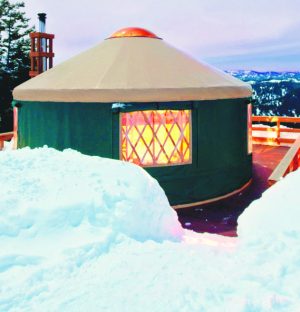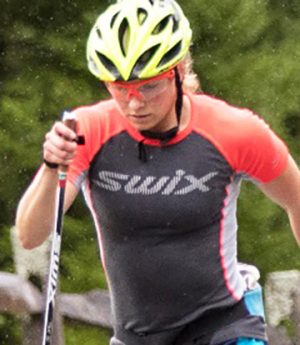As we reported earlier that former Finnish Ski Association executives – Pekka Vahasoyrinki, Antti Leppavuori, and Jari Piiranen as well as former skier Jari Rasanen all face charges of aggravated fraud for lying on the stand in a successful libel suit against the Finnish News Agency STT. The suit was brought following claims of complicity by the defendants involving widespread doping by the Finnish ski team.
During the 2001 Nordic World Championships six skiers tested positive for the use of blood volume expanders and were banned from competition. The coach at the time, Kari-Pekka Kyro was also found guilty of doping and banned from coaching.
As the trial unfolds lawyers for the defence have sought to show that some skiers can have naturally high levels of haemoglobin that are near 200 (normal haemoglobin levels are around 140 to 150 for most people) and that high altitude training or using high altitude chambers or buildings that simulate high altitude can also raise haemoglobin to this level reports the Helsigin Sanomat International Edition.
The prosecution witnesses in this case have refuted this idea. According to the chairman of the Finnish Anti-Doping Commmittee, Dr. Timo Seppala, the only way to get haemoglobin to rise to 200 is to use EPO. He is quoted as saying that “a high altitude chamber will raise a haemoglobin level of 140 to a maximum of 155 or 160.
This testimony came after previous testimony from Pirkka Makela, the former team physician of the Finnish national ski team, who said that the haemoglobin levels of several members of the national ski team were near 200 in 2001 and that the levels were brought down by the use of blood plasma expanders.
Makela also testified that he had helped to draw blood from a male member of the Finnish ski team in Trondheim, Norway in 1997 but he would not divulge the name of the skier, citing doctor-patient confidentiality. Makela said that the procedure was witnessed by Antti Leppavuori and Pekka Vahasoyrinki.
At the Nordic World Championships in Trondheim, Vahasoyrinki was the coach of the Japanese team. Makela testified that Vahasoyrinki had called him a couple of days before the competitions to talk to him about a “problem” that a Finnish skier was having. Kari-Pekka Kyro, the coach of the Finnish team at the time, has stated that at the 1997 Worlds in Trondheim Jari Rasanen had haemoblogin levels that were so high he had to be “drained of blood” to bring them down.
Makela said that he did the “bloodletting” under instructions from Tapio Videman, a sports doping expert, who had told him to make sure that the maximum legal haemoglobin level of 185 for men would not be exceeded. (the maximum level for women at the time was 165). In 2000 these levels were dropped to 175 and 160 respectively.
Makela also stated that blood was let from Finnish skiers at the Olympics in Nagano in 1998 and that higher levels were recorded at the World championships in 1999 in Ramsau. He said, however that “even in Ramsau the levels were not as astronomical as in Lahti in 2001, where several athletes had levels exceeding 200.” He stated that the coaches of the Finnish Ski Association were aware of the use of plasma expanders at the time.
Seppala also testified that he suspects that the skiers had used EPO since the 1990s. EPO was patented in 1988 and came on the market in 1989-1990.
“EPO was not available legally in the 1990s so crooked means had to be used. No internet channels existed yet, but there were always people who stole. EPO was also manufactured in clandestine laboratories,” Seppala said on the witness stand.
Testifying after Seppala was Urho Kujala, a professor of Sports and Exercise Medicine, who agreed with Seppala that it was very unlikely that altitude training in mountain areas would raise haemoglobin to the 190 or higher range. He stated that “the level with the skiers has been measured to ride from just over 150 to 165.” Kujala also showed records of over 230 skiers from 1974 to 1986, before EPO came on the market, which showed a variation in haemoglobin levels between 120 and 178. The average was 148.
The trial is supposed to continue into June. Stayed tuned, this is getting interesting.
Read more in the Helsigin Sanomat International Edition HERE and HERE.






![National camp action [P]...](https://skitrax.com/wp-content/uploads/2019/08/Duluth-4-2019-08-08-at-10.46.51-AM-300x246.png)
![Matt Liebsch on the CXC Elite Team [P] CXC...](https://skitrax.com/wp-content/uploads/2019/08/Matt-Liebsch-CXC.2-525x700.4-300x267.jpg)
![Dan LaBlanc [P]...](https://skitrax.com/wp-content/uploads/2019/08/Dan-LaBlanc-img_1855.3.jpg)

![Jack Sasseville [P] Pam Doyle](http://skitrax.com/wp-content/uploads/2011/05/Jack-Sasseville.3-200x218.jpg)
June 1st, 2011 at 7:02 am
I don’t understand this at all! How can the Finns and Lance Armstrong be doping!? They aren’t from the Eastern Bloc!